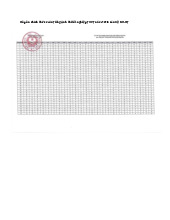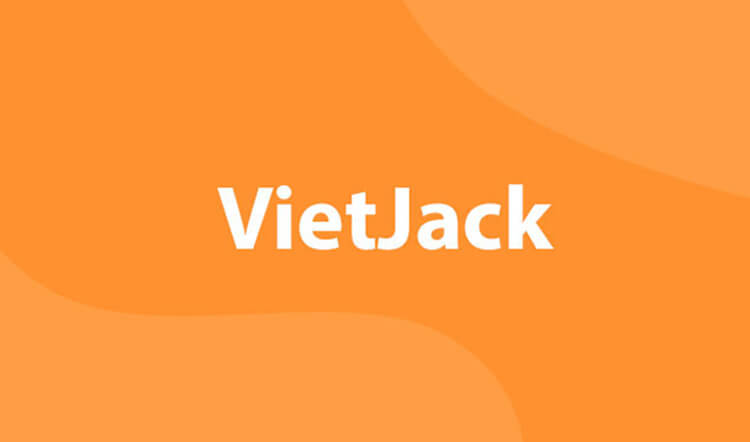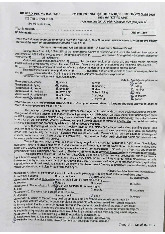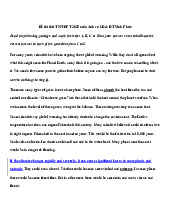



















Preview text:
Đề ôn thi THPT Quốc gia 2025 môn Anh có đáp án
Đề phát triển từ đề minh họa tốt nghiệp THPT Quốc gia 2025
Read the following advertisement and mark the letter A, B, C or D on
your answer sheet to indicate the correct option that best fits each of the
numbered blanks from 1 to 6. Udemy: Learn Anything, Anytime
Udemy is an online learning platform (1)_________ people learn new skills and improve
their knowledge. With over 150,000 (2)_________, students can (3)_________ from a wide
range of subjects. Whether you want to learn about topics like business, design, IT, and more.
Udemy offers flexible learning (4)_________ your own pace, so you can fit courses around
your schedule. Whether you’re looking (5)_________ in your career or learn something new,
Udemy has something for everyone. You can access courses on your computer, tablet, or
phone, making learning easy and (6)_________. Start learning today and unlock your potential with Udemy.
[Adapted from Udemy – Online Courses] Question 1: A. that helps B. helping C. which help D. helped
Question 2: A. learning online courses B. courses online learning C. courses learning online D. online learning courses Question 3: A. select B. choose C. pick D. find Question 4: A. in B. on C. at D. with Question 5: A. to be advanced B. advancing C. advance D.to advance Question 6: A. accessibility B. accessing C. accession D. accessible
Read the following leaflet and mark the letter A, B, C or D on your
answer sheet to indicate the correct option that best fits each of the
numbered blanks from 7 to 12.
The Problem of Child Labour
Child labour is a significant issue that (7)_________ many children worldwide. It often
forces them to work long hours in poor conditions, affecting their (8)_________ and mental
health. Many children are unable to attend school, which has a long-term impact on their
futures. (9)_________ these challenges, organizations like UNICEF are (10)_________ to
provide better opportunities for children. They believe that through offering education and
protection, child labour can be significantly reduced. Although child labour still remains in
(11)_________ parts of the world, efforts are being made to (12)_________ its impact.
[Adapted from UNICEF – Child Labour] Question 7: A. includes B. involves C. affects D. causes Question 8: A. physical B. mental C. social D. emotional
Question 9: A. Because of B. In spite of C. Due to D. Instead of
Question 10: A. focusing on B. look forward to C. come up with D. find out Question 11: A. much B. many C. little D. most
Question 12: A. decrease B. lessen C. control D. reduce
Mark the letter A, B, C, or D on your answer sheet to indicate the correct
arrangement of the sentence to make a meaningful paragraph/letter in
each of the following questions. Question 13.
a. John: That sounds amazing! Italy is such a beautiful country to visit.
b. Mary: Yes, I'm going to Italy next month, and I can't wait to explore the countryside.
c. John: Have you booked your holiday for this summer yet? A. a - c - b B. c -a -b C. c -b-a D. b -c-a Question 14.
a. Jenny: I'll be working as a graphic designer for an advertising agency.
b. Jenny: Yes, I'm really excited about it.
c. Tom: That sounds like a fantastic opportunity.
d. Tom: What will you be doing there?
e.Tom: I heard you're starting a new job next week! A. d-a-e-b-c B. d-b-e-a-c C. e-b-d-a-c D. e-a-d-b-c Question 15. Dear Michael,
a. I'm really grateful for your feedback; it gave me a fresh perspective.
b. Thanks for reviewing the draft of my article on environmental issues.
c. I'm making the necessary edits now and hope to submit it by the end of the week.
d. If you have time, maybe we can discuss the revisions over coffee.
e. I look forward to your thoughts on the updated version once it's ready. Best wishes, Lily A. b-a-d -c-e B. b-a-c-e-d C. d-a-c-b-e D. b-c-d-a-e Question 16.
a. Although it was initially difficult to adjust, I've grown accustomed to the fast-paced work environment.
b. My team and I collaborate regularly to meet tight deadlines, which keeps me on my toes.
c. For instance, we're currently working on an important project that requires constant communication and creativity.
d. Since joining this company, I've gained a tremendous amount of experience in managing complex tasks.
e.Overall, I feel proud of the work we've accomplished and how far we've come as a team. A. b -c-a-d-e B. d-a-b-c-e C. d-c-b-a-e D. c-b-d-a- e Question 17.
a. In addition to teaching, I participated in language exchange programs and helped organize
cultural events for the local community.
b. Recently, I completed a six-month internship in France, where I taught English to students of various ages.
c. Looking back, I realise how much I've grown both personally and professionally during my time abroad.
d. This experience not only improved my teaching skills but also deepened my
understanding of different cultures.
e. I've always been fascinated by languages, and my studies have taken me to several different countries. A. d - c -a -b -e B. e-b-d-a-c C. e-c-b-d-a D. c-d-e-b-a
Read the following passage about the benefits of learning a foreign
language and mark the letter A, B, C, or D on your answer sheet to
indicate the option that best fits each of the numbered blanks from 18 to 22.
Learning a foreign language has become increasingly important in our globalized world. It
not only opens up new opportunities for communication and cultural exchange but also
(18)___________. Despite these advantages, there are still challenges involved in learning a
new language, especially in (19)___________.
Many educational institutions are incorporating foreign language programs
(20)___________. These programs are designed to enhance students' cultural awareness and
improve their career prospects. For example, (21)___________ in various job markets,
where employers value language skills. However, it is essential (22)___________ to meet the needs of diverse learners.
[Adapted from The Benefits of Learning a Foreign Language] Question 18.
A. provides a competitive edge in a highly interconnected and diverse society
B. provide a competitive edge in a highly interconnected and diverse society
C. that provides a competitive edge in a highly interconnected and diverse society
D. providing a competitive edge in a highly interconnected and diverse society Question 19.
A. from which maintain motivation and interest in learning to practice every day
B. maintaining motivation and interesting in learning to practice every day
C. that maintain motivation and interest in learning to practice every day
D. maintaining motivation and interest in learning to practice every day Question 20.
A. with the goal to improve students' overall language skills
B. that aim to improve students' overall language skills
C. aiming to improve students' overall language skills
D. with the aim of improving students' overall language skills Question 21.
A. Bilingual programscan offer competitive advantages in a globalized job market
B. Bilingual programscan help individuals to navigate multicultural workplaces effectively
C. Bilingual programs can significantly increase employability and advancement opportunities
D. Bilingual programscan create pathways for international career development Question 22.
A. that language education must be appropriate to the goals and environment of use.
B. to include practical and experiential activities for use in the workplace.
C. that all language education focuses solely on grammar and vocabulary
D. that language education be tailored to accommodate various learning preferences
Read the following passage about peer pressure among students and mark
the letter A, B, C, or D on your answer sheet to indicate the best answer
to each of the following questions from 23 to 30.
Peer Pressure Among Youth
Peer pressure can be particularly prevalent among teenagers, who are at a vulnerable stage of
development and seeking their identity. It is a powerful force that can significantly impact
the thoughts, actions, and behaviors of teenagers. During adolescence, individuals strive for
acceptance and belonging, making them particularly susceptible to the influence of their
peers. Understanding the nature of peer pressure and its effects is essential for supporting
teenagers in navigating this challenging aspect of their social lives.
One aspect of peer pressure is the pressure to conformto the norms and expectations of a
social group. Teenagers may feel compelled to adopt certain behaviors, preferences, or
attitudes to fit in and avoid social rejection. This conformity can range from relatively
harmless choices, such as fashion trends, to more concerning behaviors, such as substance abuse or risky activities.
Peer pressure can manifest in both explicit and implicit ways. Direct peer pressure involves
explicit requests, invitations, or demands from peers to engage in specific actions or
behaviors. Indirect or implicit peer pressure, on the other hand, is more
subtle and involves observing others' behaviors and feeling pressured to
conform without any explicit requests. This type of pressure can be equally
influential and difficult for teenagers to navigate.
It is important to note that peer pressure can have positive or negative implications. Positive
peer pressure can motivate teenagers to engage in healthy behaviors, such as participating in
sports, pursuing academic goals, or engaging in community service. However, itcan lead to
risky or harmful behaviors, such as substance abuse, delinquency, or academic underachievement.
Parents, educators, and mentors play a crucial role in helping teenagers navigate peer
pressure. By fostering open and supportive relationships, adults can provide a safe space for
teenagers to discuss their experiences and concerns. Promoting critical thinking,
assertiveness skills, and self-confidence can empower teenagers to resist negative peer
pressure and make independent, healthy choices.
[Adapted from "Peer Pressure: Its Influence on Teens and Decision Making”]
Question 23: The word "conform" in paragraph 2 is opposite in meaning to: A. resist B. adapt C. follow D. imitate
Question 24: Which of the following is NOT mentioned as a potential outcome of peer pressure? A. Participating in sports B. Using harmful substances C. Poor academic performance
D. Developing unique personal interests
Question 25: The phrase "social rejection" in paragraph 2 could be best replaced by: A. social approval B. social exclusion C. social interaction D. social engagement
Question 26: Which of the following best paraphrases the underlined sentence in paragraph 3?
A. Peer pressure can be seen directly through demands made by friends.
B. Friends can influence each other by their actions and behaviors without direct communication.
C. Indirect peer pressure is easier to recognize and avoid than direct requests from peers.
D. Observing the behaviors of those around us to conform in order to avoid being different.
Question 27: The word "it" in paragraph 4 refers to: A. academic performance B. negative behavior C. peer pressure D. social group
Question 28: Which of the following is TRUE according to the passage?
A. Peer pressure has only negative effects on teenagers.
B. Positive peer pressure can lead to healthy behaviors.
C. All peer pressure is easy to identify.
D. Teenagers do not seek social acceptance.
Question 29: In which paragraph does the writer discuss the role of adults in addressing peer pressure? A. Paragraph 2 B. Paragraph 3 C. Paragraph 4 D. Paragraph 5
Question 30: In which paragraph does the writer explain the different forms of peer pressure? A. Paragraph 1 B. Paragraph 2 C. Paragraph 3 D. Paragraph 4
Read the following passage about the importance of conserving water and
mark the letter A, B, C, or D on your answer sheet to indicate the best
answer to each of the following questions from 31 to 40.
[I] Water is one of the most essential resources on our planet, vital for all forms of life.
However, increasing demand and pollution are putting immense pressure on our freshwater
supplies. [II] According to recent studies, nearly 2 billion people worldwide live in
countries experiencing high water stress, leading to a decline in the availability of this
precious resource. This situation not only affects drinking water but also agriculture,
sanitation, and energy production.
The primary causes of water scarcity include population growth, urbanization, and climate
change. As cities expand, the demand for water increases significantly. Moreover,
agricultural practices that rely heavily on water are becoming unsustainable in many regions.
Climate change further exacerbatesthese issues, causing unpredictable weather patterns
and extreme droughts, which reduce water availability.
[III] In response to this growing crisis, everyone must prioritize water
conservation. Simple actions, such as fixing leaks, using water-efficient appliances, and
practicing mindful consumption, can make a significant difference. Additionally,
implementing policies that promote sustainable water management and investing in
technologies for water recycling can help mitigate the impacts of water scarcity. [IV]
Despite these efforts, the challenges remain substantial. It is crucial that we recognize the
importance of conserving water and take immediate steps to protect this vital resource for future generations.
Question 31: Where in this passage does the following sentence best fit?
"These strategies can significantly improve water availability in stressed regions." A. [I] B. [II] C. [III] D. [IV]
Question 32: The word “vital” in paragraph 1 could be best replaced by: A. unimportant B. crucial C. optional D. harmful
Question 33: The phrase "high water stress" in paragraph 2 refers to: A. excessive rainfall B. significant water shortage C. improved water quality D. reduced water demand
Question 34: The phrase “exacerbates” in paragraph 3 is OPPOSITE in meaning to: A. worsens B. alleviates C. maintains D. complicates
Question 35: According to paragraph 2, which of the following is NOT a contributing factor to water scarcity? A. Urbanization B. Population growth C. Extreme droughts D. City expansion
Question 36: Which of the following best summarises paragraph 3?
A. Governments should focus solely on technology to solve water issues.
B. Both the government and each individual have a role to play in protecting water resources.
C. Water conservation is primarily a government responsibility, not individual.
D. The role of each individual in protecting water resources is very important.
Question 37: Which of the following is TRUE according to the passage?
A. Water scarcity affects only drinking water supplies.
B. Urbanization decreases the demand for water.
C. Climate change negatively impacts water availability.
D. Sustainable practices are unnecessary for water management.
Question 38: Which of the following best paraphrases the underlined part in paragraph 3?
A. Individuals should consider water conservation a secondary concern when addressing this problem.
B. Society needs to focus on water conservation to effectively address the growing water shortage problem.
C. Water conservation is not an urgent issue for people facing this crisis.
D. People can manage the crisis without prioritizing water conservation.
Question 39: Which of the following can be inferred from the passage?
A. Applying technology can solve all problems of water shortage.
B. Water conservation measures need to be widely applied to create an impact.
C. Climate change is an important factor that affects water resources globally.
D. Governments play an important role in protecting polluted water sources.
Question 40: Which of the following best summarises the passage?
A. Water shortage is a major problem that requires immediate government action.
B. The importance of water conservation to combat the growing water shortage caused by
increased demand and climate change.
C. The impact of water shortage due to climate change on human life and agricultural development.
D. Immediate action is needed to address the growing water shortage crisis. ĐÁP ÁN
Read the following advertisement and mark the letter A, B, C or D on your answer
sheet to indicate the correct option that best fits each of the numbered blanks from 1 to 6. Question 1: A. that helps B.helping C. which help D.helped
Question 2: A. learning online courses
B. courses online learning
C. courses learning online
D. online learning courses Question 3: A. select B. choose C. pick D. find Question 4: A. in B.on C. at D. with
Question 5: A. to be advanced B.advancing C. Advance D.to advance
Question 6: A. accessibility B. accessing C. accession D.accessible
Read the following leaflet and mark the letter A, B, C or D on your answer sheet to
indicate the correct option that best fits each of the numbered blanks from 7 to 12. Question 7: A. includes B. involves C. affects D. causes Question 8: A. physical B. mental C. Social D. emotional
Question 9: A. Because of B. In spite of C. Due to D. Instead of
Question 10:A. focusing on
B. look forward to C. come up with D. find out Question 11:A. much B. many C. little D. most Question 12:A. decrease B. lessen C. control D. reduce
Mark the letter A, B, C, or D on your answer sheet to indicate the correct arrangement
of the sentence to make a meaningful paragraph/letter in each of the following questions. Question 13. A. a - c - b B. c -a -b C. c -b-a D. b -c-a Question 14. A. d-a-e-b-c B. d-b-e-a-c C. e-b-d-a-c D. e-a-d-b-c Question 15. A. b-a-d -c-e B. b-a-c-e-d C. d-a-c-b-e D. b-c-d-a-e Question 16. A. b -c-a-d-e B. d-a-b-c-e C. d-c-b-a-e D. c-b-d-a- e Question 17. A. d - c -a -b -e B. e-b-d-a-c C. e-c-b-d-a D. c-d-e-b-a
Read the following passage about the benefits of learning a foreign language and mark
the letter A, B, C, or D on your answer sheet to indicate the option that best fits each of
the numbered blanks from 18 to 22. Question 18.
A. provides a competitive edge in a highly interconnected and diverse society
B. provide a competitive edge in a highly interconnected and diverse society
C. that provides a competitive edge in a highly interconnected and diverse society
D. providing a competitive edge in a highly interconnected and diverse society Question 19.
A. from which maintain motivation and interest in learning to practice every day
B. maintaining motivation and interesting in learning to practice every day
C. that maintain motivation and interest in learning to practice every day
D. maintaining motivation and interest in learning to practice every day Question 20.
A. with the goal to improve students' overall language skills
B. that aim to improve students' overall language skills
C. aiming to improve students' overall language skills
D. with the aim of improving students' overall language skills Question 21.
A. Bilingual programscan offer competitive advantages in a globalized job market
B. Bilingual programscan help individuals to navigate multicultural workplaces effectively
C. Bilingual programs can significantly increase employability and advancement opportunities
D. Bilingual programscan create pathways for international career development Question 22.
A. that language education must be appropriate to the goals and environment of use.
B. to include practical and experiential activities for use in the workplace.
C. that all language education focuses solely on grammar and vocabulary
D. that language education be tailored to accommodate various learning preferences
Read the following passage about peer pressure among students and mark the letter A,
B, C, or D on your answer sheet to indicate the best answer to each of the following questions from 23 to 30.
Question 23: The word "conform" in paragraph 2 is opposite in meaning to: A. resist B. adapt C. follow D. imitate
Question 24: Which of the following is NOT mentioned as a potential outcome of peer pressure?
A. Participating in sports
B. Using harmful substances
C. Poor academic performance
D. Developing unique personal interests
Question 25: The phrase "social rejection" in paragraph 2 could be best replaced by: A. social approval B. social exclusion C. social interaction D. social engagement
Question 26: Which of the following best paraphrases the underlined sentence in paragraph 3?
A. Peer pressure can be seen directly through demands made by friends.
B. Friends can influence each other by their actions and behaviors without direct communication.
C. Indirect peer pressure is easier to recognize and avoid than direct requests from peers.
D. Observing the behaviors of those around us to conform in order to avoid being different.
Question 27: The word "it" in paragraph 4 refers to:
A. academic performance B. negative behavior C. peer pressure D. social group
Question 28: Which of the following is TRUE according to the passage?
A. Peer pressure has only negative effects on teenagers.
B. Positive peer pressure can lead to healthy behaviors.
C. All peer pressure is easy to identify.
D. Teenagers do not seek social acceptance.
Question 29: In which paragraph does the writer discuss the role of adults in addressing peer pressure? A. Paragraph 2 B. Paragraph 3 C. Paragraph 4 D. Paragraph 5
Question 30: In which paragraph does the writer explain the different forms of peer pressure? A. Paragraph 1 B. Paragraph 2 C. Paragraph 3 D. Paragraph 4
Read the following passage about the importance of conserving water and mark the
letter A, B, C, or D on your answer sheet to indicate the best answer to each of the
following questions from 31 to 40.
Question 31: Where in this passage does the following sentence best fit?
"These strategies can significantly improve water availability in stressed regions." A. [I] B. [II] C. [III] D. [IV]
Question 32: The word “vital” in paragraph 1 could be best replaced by: A. unimportant B. crucial C. optional D. harmful
Question 33: The phrase "high water stress" in paragraph 2 refers to: A. excessive rainfall
B. significant water shortage
C. improved water quality D. reduced water demand
Question 34: The phrase “exacerbates” in paragraph 3 is OPPOSITE in meaning to: A. worsens B. alleviates C. maintains D. complicates
Question 35: According to paragraph 2, which of the following is NOT a contributing factor to water scarcity?




